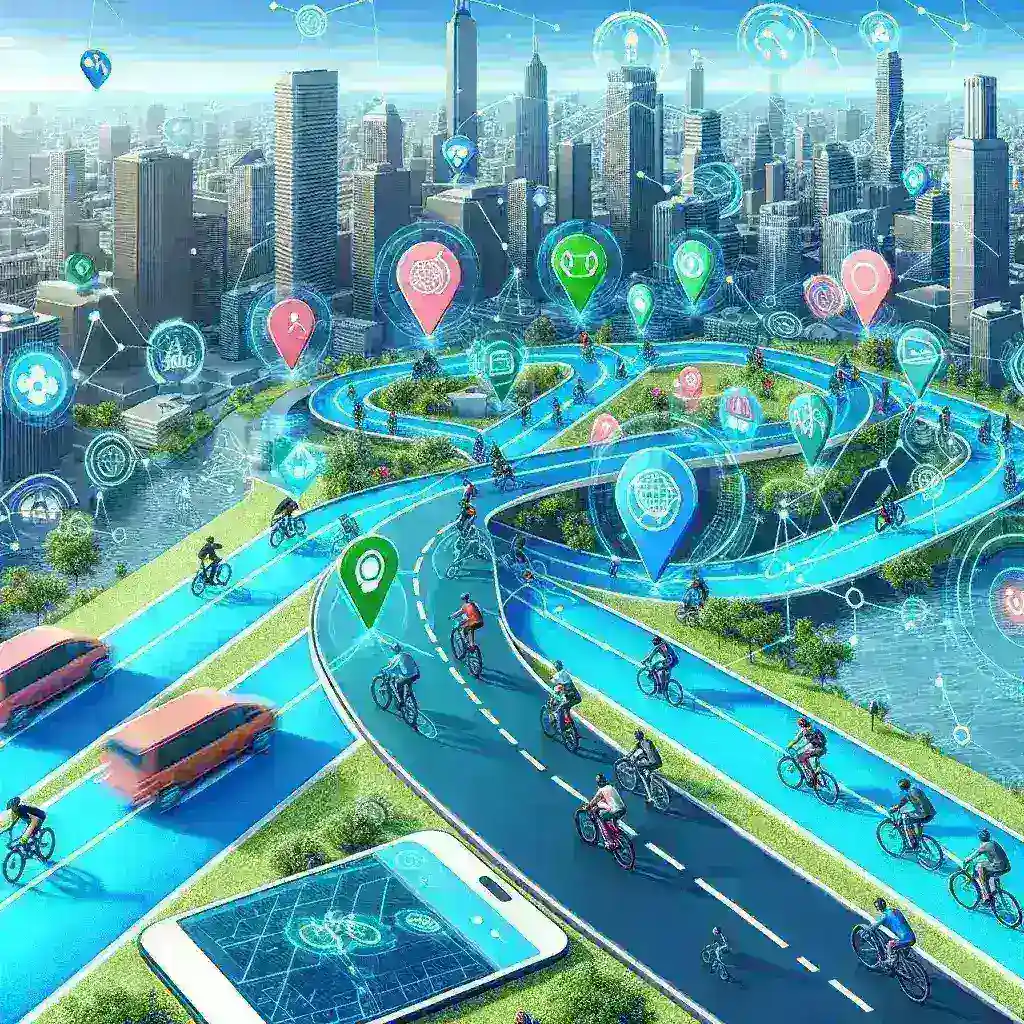Introduction
In a significant step towards enhancing urban mobility, Google Maps has embarked on a pilot program to integrate AI-powered biking route safety features in multiple cities across the United States. This innovative approach aims to provide cyclists with safer, more efficient routes that account for various factors such as traffic patterns, road conditions, and environmental factors.
The Need for Safer Biking Routes
As cities increasingly embrace cycling as a viable mode of transportation, the need for safety has become paramount. Statistics reveal that biking accidents have been rising, prompting city planners and tech companies alike to seek solutions. According to the National Highway Traffic Safety Administration (NHTSA), there were approximately 1,000 cycling fatalities in the U.S. in recent years, underscoring the urgency of implementing effective safety measures.
Why AI?
Artificial Intelligence (AI) has emerged as a transformative tool in various sectors, and transportation is no exception. By analyzing vast amounts of data, AI can identify patterns and predict potential hazards on biking routes. Google Maps is harnessing this power to enhance user experience and promote safety for cyclists.
How the AI-Powered Features Work
The newly piloted features utilize AI algorithms to assess several parameters:
- Traffic Data: Real-time traffic conditions are analyzed to suggest routes with less vehicular congestion.
- Road Conditions: The state of the road surface, including potholes or construction zones, will be factored into route suggestions.
- Environmental Factors: Weather conditions such as rain, snow, and wind intensity will influence route recommendations.
- Historical Accident Data: The system will leverage historical data to highlight areas with higher incident rates, allowing cyclists to avoid dangerous zones.
Testing in U.S. Cities
Currently, Google is piloting these features in select cities known for their cycling infrastructure and initiatives. Cities like San Francisco, Portland, and Chicago have been chosen due to their commitment to promoting cycling as a sustainable mode of transport. Each city offers unique challenges and learning opportunities, allowing Google to optimize the AI algorithms for diverse urban environments.
Case Study: San Francisco
In San Francisco, the challenging terrain and heavy traffic make biking both exhilarating and perilous. The AI-powered features aim to provide cyclists with safer routes that navigate steep hills and busy thoroughfares. Feedback from local cyclists during the testing phase has been overwhelmingly positive, highlighting how these features not only improve safety but also enhance the overall biking experience.
Pros and Cons of AI-Powered Biking Routes
Pros
- Enhanced Safety: By avoiding high-risk areas, cyclists can significantly reduce the likelihood of accidents.
- Optimized Routes: Cyclists can enjoy smoother rides with less interruption from traffic.
- Real-Time Updates: Continuous updates ensure that cyclists are informed about changing conditions, such as roadworks or accidents.
Cons
- Dependence on Technology: Over-reliance on technology may lead to reduced awareness of surroundings.
- Data Privacy Concerns: Collecting real-time data raises questions about user privacy.
- Algorithm Limitations: The AI’s effectiveness is contingent on the data it receives; poor-quality data can lead to inadequate route suggestions.
Looking Ahead: The Future of Biking in Cities
As cities continue to adapt to the growing demand for sustainable transportation, the integration of technology will play a pivotal role. The AI-powered biking route safety features from Google Maps are just the beginning. Future iterations could include:
- Personalized Route Recommendations: Based on user preferences, the system could suggest routes tailored to individual cyclists.
- Integration with Other Modes of Transport: Seamless transitions between biking, public transport, and walking could become the norm.
- Community Feedback Loops: Incorporating user feedback can further refine the AI algorithms, creating a more responsive system.
Conclusion
Google Maps’ piloting of AI-powered biking route safety features marks a promising advancement in urban cycling. By prioritizing safety and efficiency, Google not only champions cycling as a sustainable transport option but also pioneers the use of AI in promoting public safety. As this initiative unfolds, it will be intriguing to observe how it shapes the future of biking in the United States and beyond.

